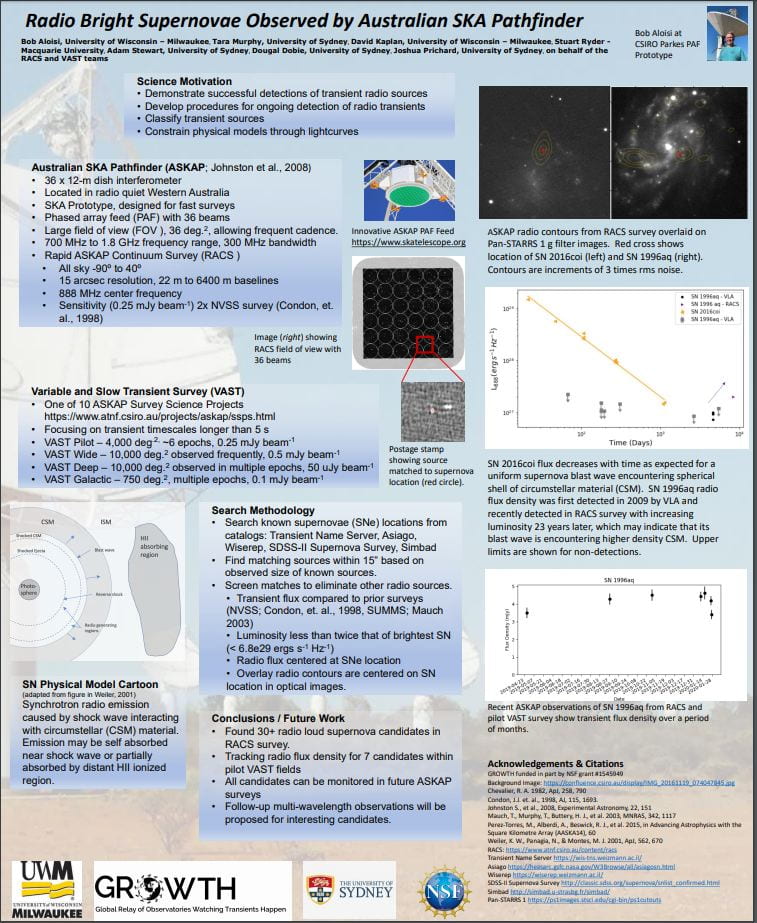Bob Aloisi, “Radio Bright Supernovae Observed by Australian SKA Pathfinder”
Mentor: David Kaplan, Physics
Transient radio flux density from supernovae are caused by synchrotron radiation related to supernova shock waves interacting with circumstellar material. These observations can constrain physical supernova models as well as the mass loss history of progenitor stars over thousands of years prior to the supernova. The Variables and Slow Transients (VAST) survey is using the Australian Square Kilometer Array Pathfinder (ASKAP) radio telescope array to explore the transient radio sky. ASKAP is an array of 36 12-meter dishes located in Western Australia, which covers 30 square degrees per field pointing, allowing sensitive, rapid sky surveys. The Rapid ASKAP Continuum Survey (RACS) included the first full set of ASKAP observations, which were taken at 888 MHz frequency and at all declinations < +40°. RACS images were searched for matches to known supernovae sky locations compiled from optical transient catalogs. Flux densities from matches were compared to those from prior radio surveys to identify candidates for which flux changed over a 20-year time period as well as additional ASKAP observations at multiple epochs from the Pilot VAST survey spanning several months for some of the matches. Several radio bright supernova candidates with transient flux densities were identified for follow up observations.
Click on the thumbnail below to open the full sized poster in a new tab.

Very cool research! This is totally outside my own field of expertise, so I’d love to know more about reasons for this research, the next steps, and overall implications for this type of work. Thank you for sharing your work virtually.
Hello,
Thank you for your informative poster and abstract! I really enjoyed learning about your research project. It’s wonderful that you were able to take part in this fascinating area of research. I too, would like to hear more of the implications of your findings, and I might suggest some narrative-type statements in a few places on your poster to underscore substantive points for the viewer. Thanks for sharing your research!